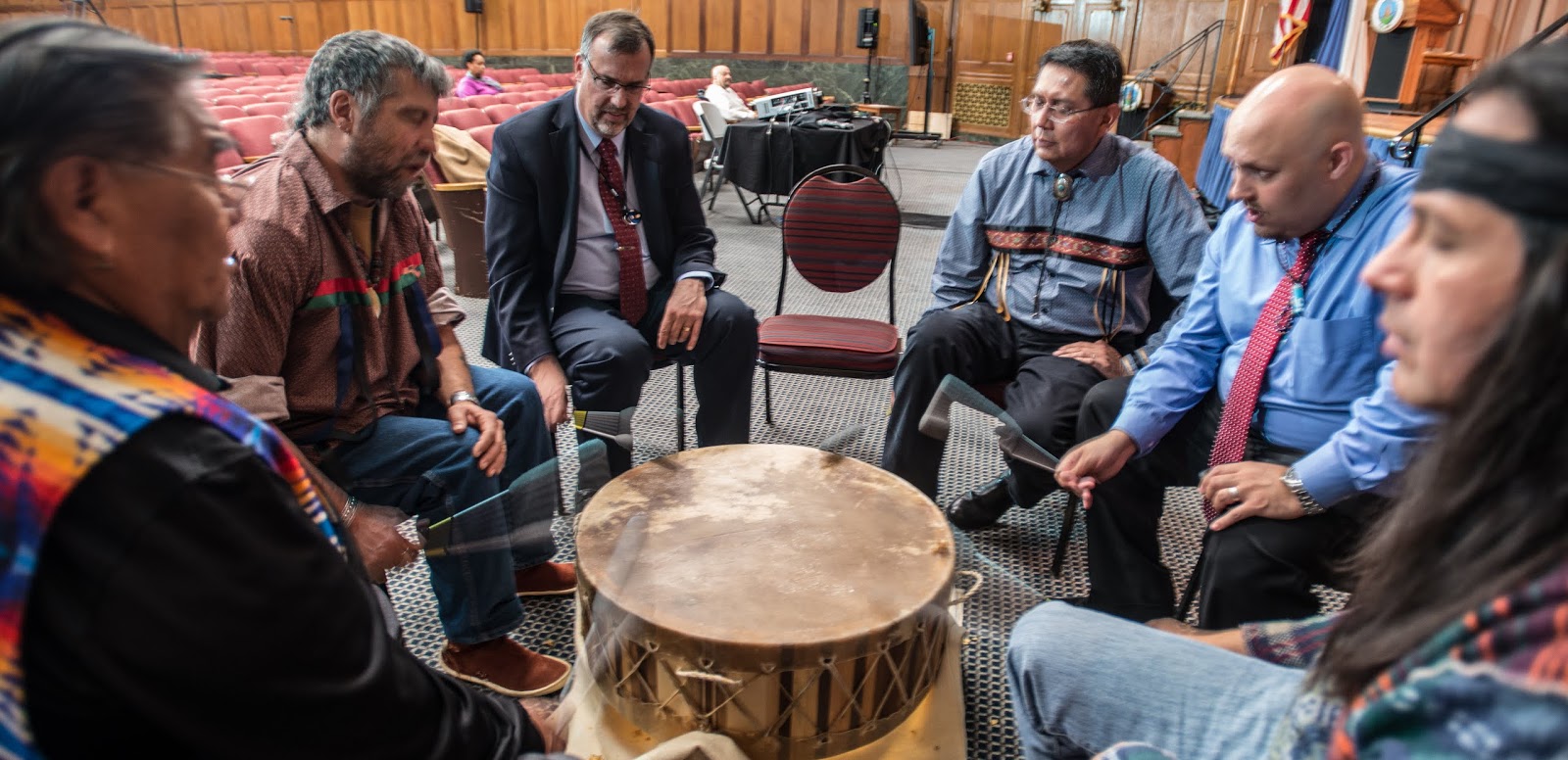Alaskan Villages Imperiled by Global Warming Need Resources to Relocate

Photo: US Department of Agriculture
In April, Secretary of State John Kerry accepted the 2015-2017 Chairmanship of the Arctic Council. At the ministerial meeting in Iqaluit, Nunavut, he outlined America’s plan to focus on climate change and living conditions of Arctic communities over the next two years. Though politically challenging, Secretary Kerry rallied the Council that, “we have to be ambitious. And the challenges that we’re facing require us to try to step up.”
The need for ambition cannot be understated. The Arctic is warming at a rate almost twice as fast as the global average, making climate change’s effects in the circumpolar north far more intense and rapid than any other ecosystem in the world.
Arctic climate change is predicted to open new shipping lanes and offshore oil fields; but it is also devastating to local communities. While nature photographs of polar bears and melting ice dominate media narratives, the top of the world is home to four million people that live on the frontlines of climate change.
Coastal erosion, forest fires, and storm surges are threatening the physical and economic safety of settlements across the Arctic Ocean shoreline. Further inland, thawing permafrost is compromising the stability of transportation, sanitation, and public service infrastructure built upon once sturdy foundations.
In Alaska alone, thirty-one villages face imminent threat of destruction from erosion and flooding. Many of these villages have 10 to 20 years of livability before their streets, schools, and homes become uninhabitable. At least 12 have decided to relocate – in part or entirely – to safer ground to avoid total collapse.
This week, the United States approaches the First Hundred-Days mark of its opportunity to lead the international community in confronting climate change’s Arctic challenge. So how has America done?
In Secretary Kerry’s words, still ‘trying to step up.’
In early 2015, President Obama proposed $50.4 million in federal spending to help Native American communities to adapt public infrastructure to the effects of climate change. That is less than half of what the Army US Corps of Engineers estimates to be needed to relocate just one Alaskan town. Moving an entire community to a safer location mere miles away can cost anywhere from $80 million to upwards of $250 million.
Currently, federal programs for disaster assistance are limited and mostly unavailable to villages that require relocation. Relief programs focus on sudden natural disasters like Hurricane Sandy at the expense of financially supporting the adaptation and relocation of towns facing dangers from gradual natural processes. Because of this, communities in Alaska must rely on ad hoc federal and state grants to build single buildings, in hopes of relocating in full before an emergency evacuation is needed.
To truly lead in meeting today’s most pressing Arctic issue and help safeguard the wellbeing of northerners, Secretary Kerry must take seriously the issue of climate relocation. This means working towards the creation of a legal and financial structure that can adequately respond to communities in need today.
Defining a new governance structure and making the necessary financial resources available to deal with climate relocation will take hard work and a determined commitment by Secretary Kerry and his Arctic team. The structure must be built through a vertical partnership of engagement at all levels of government, an aspect largely lacking in America’s current national Arctic framework. That means not only being inclusive of tribal, local, and state stakeholders in Alaska, but also engaging the many federal agencies involved in relocation activities from FEMA to the newly formed Senate Arctic caucus.
A first step towards this ambition is simple: convene a relocation policy meeting in DC with vital local, state, and federal policymakers and stakeholders within the year to draft a strategic policy plan. The aim of the meeting must be made clear to all participants: to lay the foundation for a legally and financially supported governance structure for climate-induced relocation for short-term implementation. The plan’s components must be actionable and further steps to be taken over the two-year Chairmanship transparent and deliverable. Debate over who will fund relocation and which agency will lend technical assistance during the meeting will be intense. But the meeting, debates, and eventual outcomes are essential for protecting the lives of our northernmost citizens.
In Iqaluit, Secretary Kerry concluded the ministerial meeting by stressing the importance of acting quickly. “We all know the clock is ticking and we actually don’t have a lot of time to waste.” This is most evident today in the Arctic, but the clock is also ticking for communities in New Jersey, Louisiana, California, and other coastal states. Alaskan villages may be the first to be forced into climate-induced relocation, but they certainly won’t be the last. Creating a framework for relocation can establish an important structure for vulnerable towns across America to use in the decades to come. To make America’s next hundred days as Chair more impactful than the first, Secretary Kerry and his Arctic team must inaugurate the process to build a deliverable policy over the next two years to help not only Alaskans, but citizens on all American shorelines before times runs out for us all.
A version of this op-ed first appeared in The Guardian on 27 July 2015.